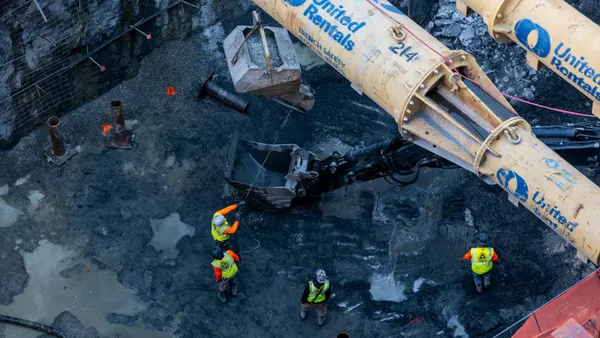Dive Brief:
-
Home flipping, which covers properties sold twice in one year by unrelated parties, is on the rise again, taking 6.1% of all home sales last year, up from 5.3% in 2015 and the highest level since 2007, according to real estate website Trulia.
-
The speculative practice is rebounding most significantly in cities that bore of the brunt of the foreclosure wave during the collapse, Bloomberg noted in its analysis of the report.
-
Las Vegas topped the list, with flipped homes accounting for 10.5% of sales in 2016. It was followed by Deltona–Daytona Beach–Ormond Beach, FL (9%), Tampa, FL (8.4%), Memphis, TN (8.2%), and Fresno, CA (8.2%) as the top markets for flipping. Detroit and Chicago saw the biggest jumps in flips last year, up 4.8% and 2.8%, respectively.
Dive Insight:
Continual home-price increases are one factor driving the rise of home flipping, drawing investors with the promise of a greater return on their investment in renovating the property. As such, flippers are more likely upgrading the homes than reselling them as-is at higher prices, Trulia noted, opening up opportunities for builders and remodelers to get in on the work.
A lack of sufficient housing inventory to meet growing demand nationally is pushing prices up. The latest S&P Core Logic Case-Shiller U.S. National Home Price Index put home prices in the U.S. up 5.6% year-over-year in October 2016, 0.2% ahead of the most recent market peak in 2006.
Existing-home sales, which would include the flipped properties, dipped 2.8% in December while the category’s median sales price jumped up 4% from November to $232,200, marking the 58th-straight month of year-over-year price gains, according to the National Association of Realtors. Unsold inventory for the category shrunk to 3.6 months in December from 3.9 months a year earlier.
The Commerce Department announced Thursday that new single-family home sales tumbled 10.4% from November to December while the median sales price jumped to $322,500 in December from $305,400 the month before. Inventory ticked down from 5.8 months to 5.0 months during that time.
Where inventory — and price softening — is most needed is where it’s been hardest to find: the entry-level category. In its fourth-quarter Inventory and Price Watch report, Trulia noted that the stock of for-sale homes positioned for typical first-time buyers fell 12.1% year-over-year during the period while buyers in that groups spent more than one-third of their income (38.5%) to purchase a home during the period.
For more housing news, sign up for our daily residential construction newsletter.













